Top Tourist Attractions in Paris
As the capital city of France, Paris has endured as an important city for more than 2,000 years. Often called by nicknames like the “city of love” and “city of lights,” Paris is today one of the world’s leading centers for business, fashion, entertainment, art and culture. Just the mere mention of Paris conjures up images of the city’s world famous landmarks, museums and cathedrals. An overview of the top tourist attractions in Paris:
Eiffel Tower

Place de la Concorde

Sainte-Chapelle

Centre Pompidou
Designed in the style of high-tech architecture, Centre Pompidou is a cultural institution in the Beaubourg area of the 4th arrondissement. It houses a vast public library, the Musée National d’Art Moderne which is the largest museum for modern art in Europe, a bookshop, a movie theater and a panoramic terrace. The library occupies the first three floors of the building, while the museum’s permanent collection is located on floors 4 and 5. The first and top floor are used for large expositions. The Centre is named after Georges Pompidou, the President of France from 1969 to 1974 who commissioned the building.
Musee d'Orsay
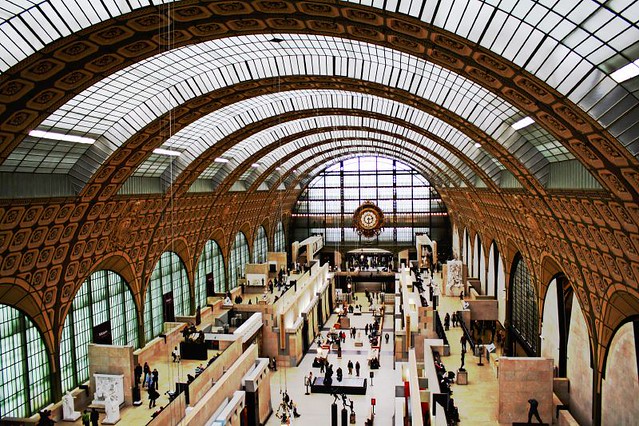
Jardin du Luxembourg

Sacre-Coeur


The Louvre Museum
To learn the Louvre inside and out, you might need half a lifetime. Still, one has to start somewhere. The site of the world's largest and most diverse collection of pre-20th century painting, sculpture, and decorative objects, The Louvre is a global touristic draw card. Not forgetting the Mona Lisa and the Venus de Milo, make sure to visit less crowded wings, to bask in the works of Vermeer, Caravaggio, Rembrandt, and countless others. The centuries-old palace itself is testament to a rich history spanning from the medieval period to the present.
Louvre
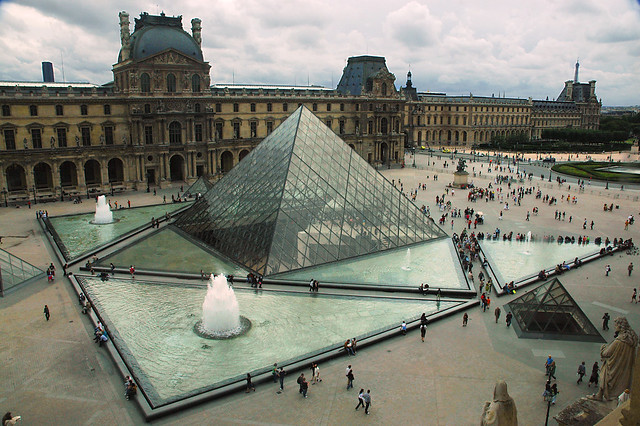 Topping the list of the world’s most visited museums, the Louvre Museum is located in the Louvre Palace with its signature glass pyramid marking its entrance. Housing a collection of more than 1 million objects, the Louvre boasts some of the world’s most famous art works such as Leonardo da Vinci’s “Mona Lisa,” Michelangelo’s “Dying Slave” and the Greek statue, “Venus of Milo.” Other popular exhibits include the extravagant apartments of Napoleon III, the ancient Code of Hammurabi, Egyptian antiquities and paintings by masters like Rembrandt and Rubens.
Topping the list of the world’s most visited museums, the Louvre Museum is located in the Louvre Palace with its signature glass pyramid marking its entrance. Housing a collection of more than 1 million objects, the Louvre boasts some of the world’s most famous art works such as Leonardo da Vinci’s “Mona Lisa,” Michelangelo’s “Dying Slave” and the Greek statue, “Venus of Milo.” Other popular exhibits include the extravagant apartments of Napoleon III, the ancient Code of Hammurabi, Egyptian antiquities and paintings by masters like Rembrandt and Rubens.

Notre Dame is beautiful at dusk. Joe Daniel Price/Moment/Getty Images
Notre Dame Cathedral
Louvre


Notre Dame is beautiful at dusk. Joe Daniel Price/Moment/Getty Images
Notre Dame Cathedral
No first trip to Paris is complete without a visit to this marvel of gothic architecture, dating to the 12th century. One of the most singular and beautiful cathedrals of Europe, Notre Dame Cathedral's dramatic towers, spire, stained glass and statuary are guaranteed to take your breath away. Witness firsthand the spot that was once the heartbeat of medieval Paris, and that took over 100 years of hard labor to complete. Climbing the North tower to see Paris from the hunchback Quasimodo's vantage is essential, too. You'll soon understand why Notre Dame is one of Paris' top attractions.
Arc de Triomphe
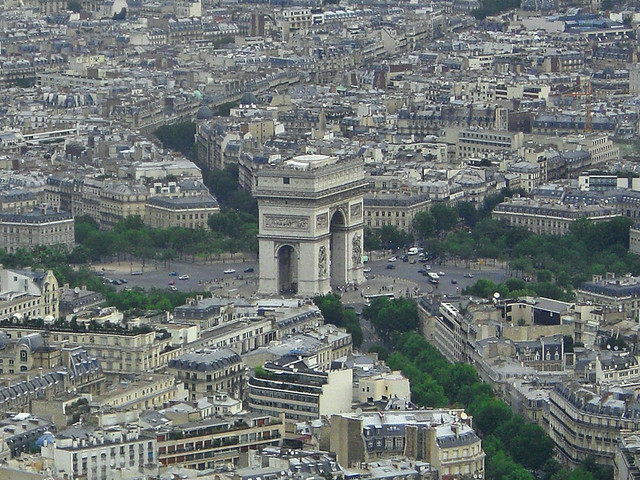 One of the most popular tourist attractions in Paris, the Arc de Triomphe was constructed in 1806 to memorialize the triumphal battles of Napoleon Bonaparte. Standing 164 feet high and 148 feet (50 by 45 meters) wide, the arch features intricate reliefs depicting victorious battles and engraved names of many who died fighting for the emperor. Beneath the arch is the Tomb of the Unknown Soldier from the first world war.
One of the most popular tourist attractions in Paris, the Arc de Triomphe was constructed in 1806 to memorialize the triumphal battles of Napoleon Bonaparte. Standing 164 feet high and 148 feet (50 by 45 meters) wide, the arch features intricate reliefs depicting victorious battles and engraved names of many who died fighting for the emperor. Beneath the arch is the Tomb of the Unknown Soldier from the first world war.

Versailles
Versailles [1] is a city on western edge of the French capital city Paris, now part of the sprawling metropolis within the Ile de France region. Versailles is best known for being the site of the vast royal palace and gardens built by King Louis XIV within what was previously a royal hunting lodge. It is also one of the wealthiest cities near Paris.





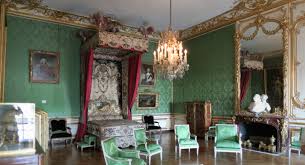
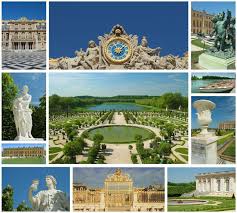
Mont-Saint-Michel and its Bay
Perched on a rocky islet in the midst of vast sandbanks exposed to powerful tides between Normandy and Brittany stand the 'Wonder of the West', a Gothic-style Benedictine abbey dedicated to the archangel St Michael, and the village that grew up in the shadow of its great walls. Built between the 11th and 16th centuries, the abbey is a technical and artistic tour de force, having had to adapt to the problems posed by this unique natural site.
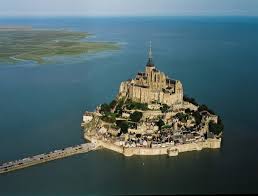

Arc de Triomphe

Moulin Rouge
The Moulin Rouge is the world famous cabaret venue which opened in 1889. This was the time known as the Belle Epoque - France was not at war for a change, a century was coming to an end, creativity was blooming, and people were filled with the joys of life. What better time to launch a dance-hall of beautiful showgirls? The fact that Toulouse-Lautrec was obsessed with drawing them didn't hurt either.
Opened by Joseph Oller and Charles Zidler, who were confident their place would outshine everywhere else, the Moulin Rouge had a huge dance floor, mirrors everywhere, and an atmosphere of total euphoria. Here aristocrats came to mingle with the riffraff and women of easy virtue. There were even donkeys for the ladies with an adventurous spirit. Today there are no donkeys, but the euphoria continues. Oller and Zidler were right
Moulin Rouge
The Moulin Rouge is the world famous cabaret venue which opened in 1889. This was the time known as the Belle Epoque - France was not at war for a change, a century was coming to an end, creativity was blooming, and people were filled with the joys of life. What better time to launch a dance-hall of beautiful showgirls? The fact that Toulouse-Lautrec was obsessed with drawing them didn't hurt either.
Opened by Joseph Oller and Charles Zidler, who were confident their place would outshine everywhere else, the Moulin Rouge had a huge dance floor, mirrors everywhere, and an atmosphere of total euphoria. Here aristocrats came to mingle with the riffraff and women of easy virtue. There were even donkeys for the ladies with an adventurous spirit. Today there are no donkeys, but the euphoria continues. Oller and Zidler were right
Versailles
Versailles [1] is a city on western edge of the French capital city Paris, now part of the sprawling metropolis within the Ile de France region. Versailles is best known for being the site of the vast royal palace and gardens built by King Louis XIV within what was previously a royal hunting lodge. It is also one of the wealthiest cities near Paris.

Mont-Saint-Michel and its Bay
Perched on a rocky islet in the midst of vast sandbanks exposed to powerful tides between Normandy and Brittany stand the 'Wonder of the West', a Gothic-style Benedictine abbey dedicated to the archangel St Michael, and the village that grew up in the shadow of its great walls. Built between the 11th and 16th centuries, the abbey is a technical and artistic tour de force, having had to adapt to the problems posed by this unique natural site.
No comments:
Post a Comment